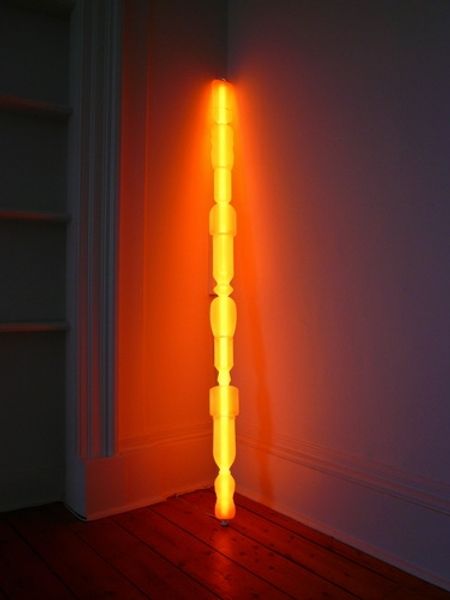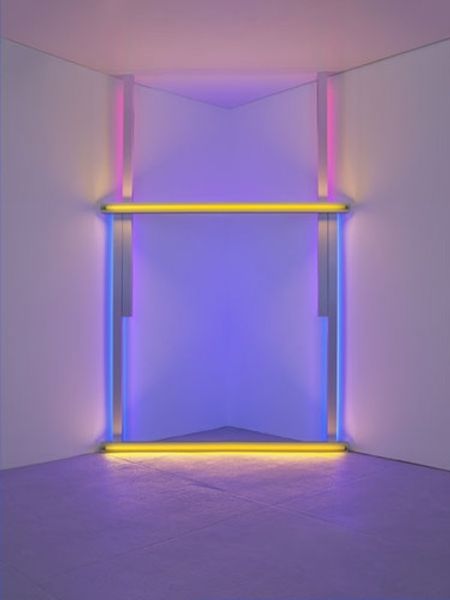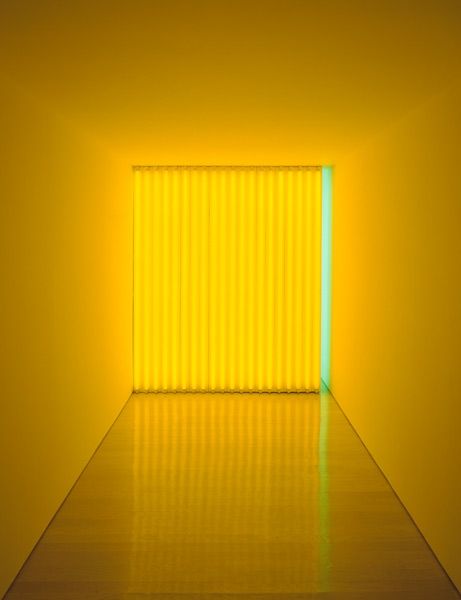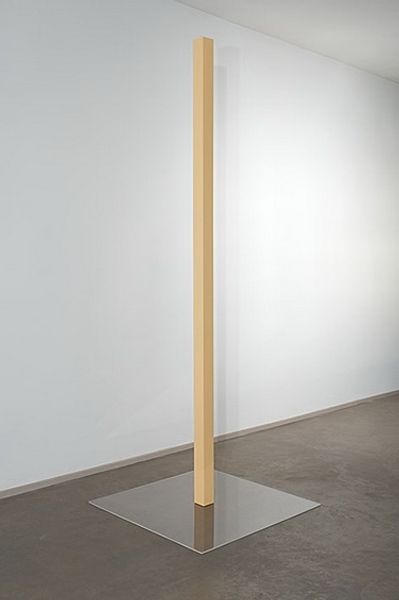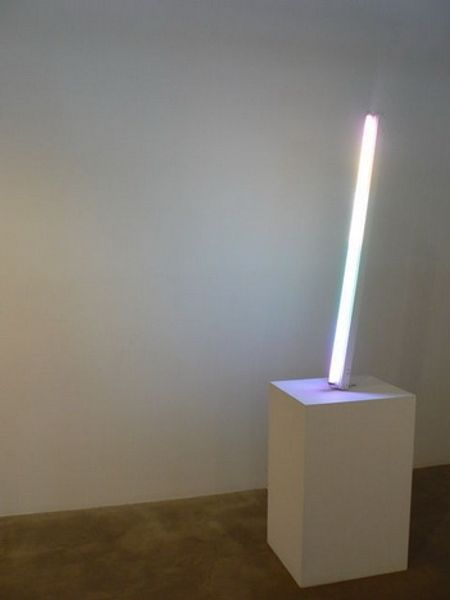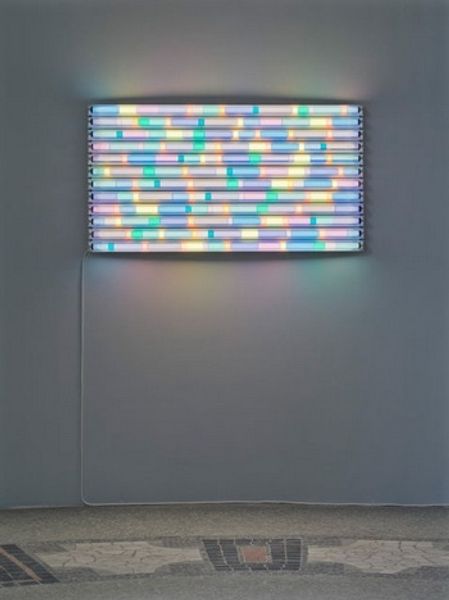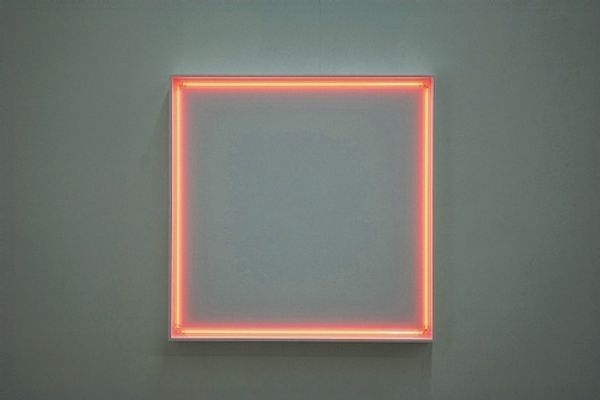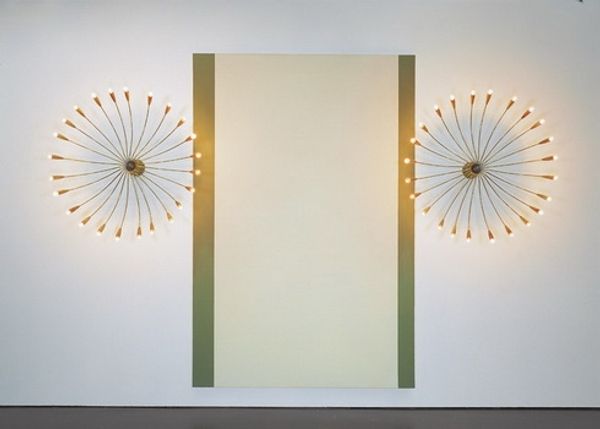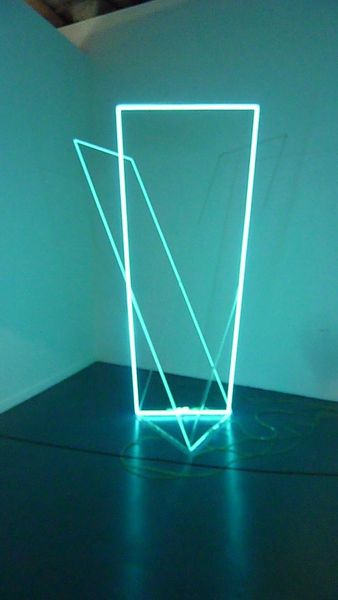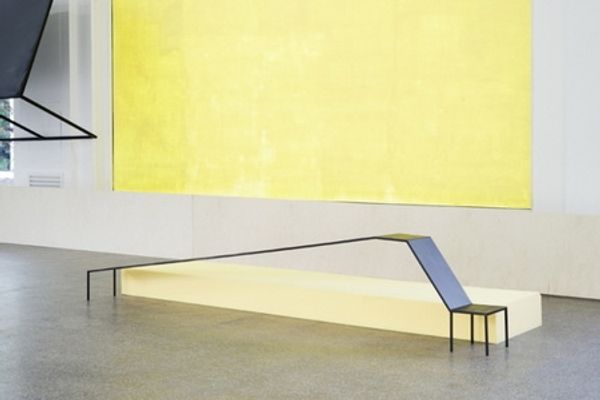
Diagonal of Personal Ecstasy (the Diagonal of May 25, 1963, to Constantin Brancusi) 1963
0:00
0:00
sculpture, installation-art
#
conceptual-art
#
minimalism
#
minimal geometric
#
geometric
#
sculpture
#
installation-art
#
abstraction
#
line
Copyright: Dan Flavin,Fair Use
Editor: So, here we have Dan Flavin's "Diagonal of Personal Ecstasy (the Diagonal of May 25, 1963, to Constantin Brancusi)" from 1963, which is an installation using a single fluorescent light tube. It feels strikingly simple, almost austere, yet the yellow light it emits is incredibly warm. How do you approach a work like this, so seemingly minimal? Curator: Works like this become truly interesting when considered in the broader context of the art world and its institutions. Think about what art was doing at that time. What did Minimalism react to? Flavin and others questioned the elevated status of the art object, its preciousness. They challenged traditional notions of sculpture. Editor: So, by using commercially available, everyday objects like fluorescent lights, he's sort of democratizing art? Curator: Exactly! It disrupts the idea of the artist as a skilled creator of unique objects. Flavin makes the readymade central. And that the work is dedicated to Brancusi indicates the rejection of the handmade is less a denial of art's heritage but its reinterpretation in line with everyday life. What do you make of the title? Editor: It's a pretty bold title for something so simple. The "personal ecstasy" part, juxtaposed with the clinical-sounding "diagonal," feels almost ironic. Curator: Indeed, but look at the space it occupies. Consider how the light interacts with the surrounding architecture. Flavin understood that the light was not just an object, it shaped experience, and ultimately transformed any exhibition space into something immersive and interactive. Do you think the museums responded accordingly at the time? Editor: That’s interesting… probably not at first, I’d imagine. It forces the institution to become more than just a white cube, right? This work really gives me a lot to think about in terms of the changing role of the artist and gallery space itself! Curator: Precisely. It demonstrates how the reception and institutional context influence our understanding of what art can be.
Comments
No comments
Be the first to comment and join the conversation on the ultimate creative platform.
